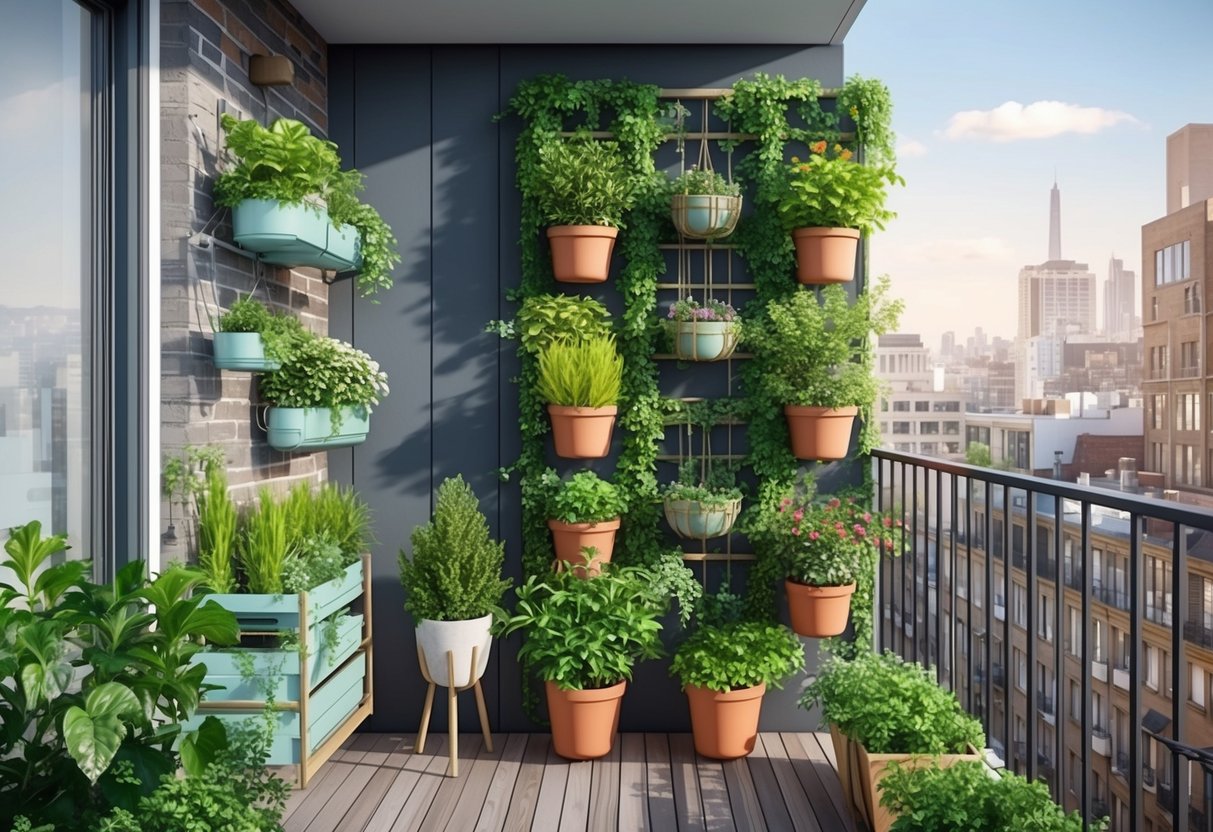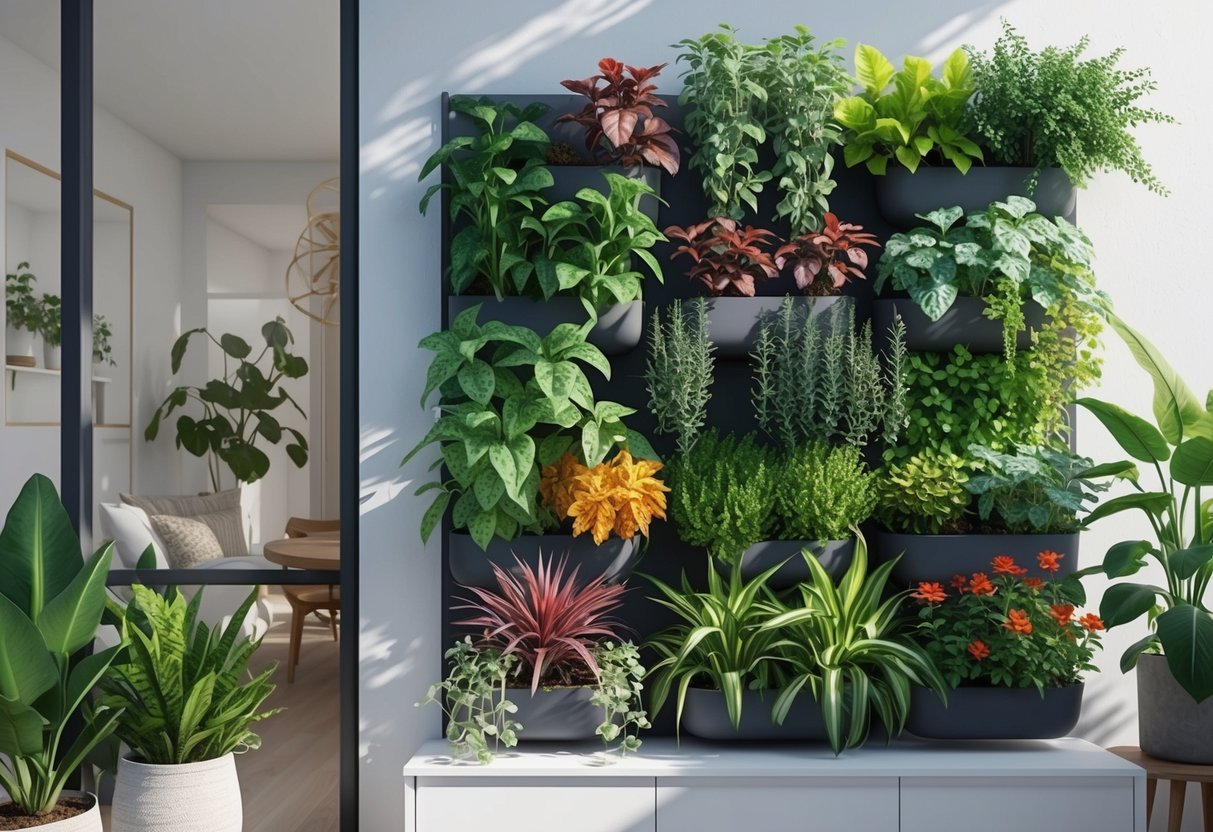
For those looking to maximize indoor or outdoor space, vertical gardening offers an efficient and modern approach. Vertical gardens let anyone enjoy homegrown plants, herbs, and flowers—even in small apartments or tight urban environments—by utilizing walls, fences, and other upright structures.
This space-saving garden solution fits seamlessly into urban gardening trends. Even balconies or small patios can be turned into lush, productive areas.
Adopting vertical gardening techniques can transform how people grow food or decorate their homes. Creative options like trellises, stacked planters, and hanging baskets support a wide range of plant varieties while making maintenance and harvesting easier.
With many DIY budget ideas and easy store-bought solutions available, starting a thriving vertical garden is more accessible than ever, even for beginners.
Understanding Vertical Gardening Basics

Vertical gardening transforms limited ground space into productive growing areas, taking advantage of unused walls, fences, or structures. Plant selection, support systems, and garden types all play a role in ensuring that a vertical garden thrives, especially in small urban spaces.
What Is a Vertical Garden?
A vertical garden is a method of growing plants upward, using structures such as trellises, wall-mounted planters, or tiered stands. This technique increases growing capacity by utilizing vertical rather than horizontal surfaces, which is useful for balconies, patios, and small yards.
Green walls (also called living walls) often use dense plantings that completely or partially cover the surface, creating a lush visual effect and sometimes improving air quality. Many vertical gardens require specific support to anchor plants, especially for heavier species or vegetables.
Home gardeners frequently combine vining plants, trailing flowers, and lightweight edible crops for ease of maintenance. Vertical gardening systems are practical options for converting tight or underused urban spaces into vibrant, productive landscapes.
They work well both indoors and outdoors with the correct setup.
Types of Vertical Gardens
Vertical gardens come in several forms, each suited for different locations and plant types. One popular format is the garden tower, a freestanding structure with stacked planting pockets, ideal for vegetables and herbs.
Wall-mounted vertical gardens, or green walls, are affixed to fences or building exteriors and use pockets, shelves, or panels to hold soil and plants. Free-standing trellis systems or modular plant frames are also widely used, often supporting climbing vegetables or ornamental vines.
For apartment dwellers, tiered hanging planters or shoe organizers can turn balconies and railings into green, living spaces. Hydroponic vertical gardens, which use water rather than soil, are becoming more common indoors.
Each type offers unique benefits, from maximizing sunlight exposure to improving accessibility.
Key Benefits of Vertical Gardens
Vertical gardens offer practical advantages for any home, particularly in urban settings with limited floor space. By growing upwards, these systems can increase yields and variety while taking up less room on patios, balconies, or small backyards.
They help maximize sunlight exposure for every plant, which can lead to healthier growth. Many people also use green walls or living walls to enhance air quality and provide natural insulation for buildings.
Vertical gardening can add visual appeal, reduce clutter, and simplify harvesting and maintenance. These gardens are adaptable, energy efficient, and suitable for a wide range of crops and climates.
Selecting the Right Location and Utilizing Vertical Space
Choosing the right place for a vertical garden affects plant growth, maintenance, and accessibility. By thinking carefully about available light, airflow, and structural support, anyone can make the most of small garden or urban spaces.
Maximizing Vertical Space Indoors and Outdoors
Vertical gardening allows gardeners to turn unused walls, balconies, fences, or trellises into green spaces. For those in apartments or with limited outdoor garden space, options like wall-mounted planters, stacked pots, shelving, and hanging baskets can make use of every vertical inch, especially in urban spaces.
Outdoors, fences, brick walls, patio rails, and even freestanding frames create opportunities to grow upward. Using modular systems or trellises can also enable vertical vegetable garden ideas, supporting climbing crops like beans or cucumbers.
Indoors, vertical shelving with drip trays, pocket planters, or hydroponic towers are effective for herbs and leafy greens. Consider using a mix of plant types—compact, trailing, and climbing varieties—to layer different heights and textures.
This not only increases productivity but also enhances visual appeal. Accessibility for watering and harvesting should also be top of mind, along with ensuring secure support for heavier plants.
For more creative inspiration and methods for maximizing space, vertical gardening concepts can offer practical solutions.
Assessing Light and Environmental Conditions
Light is the most important factor for the health of a vertical garden. Observe how much direct, indirect, or artificial light the spot receives.
South-facing outdoor walls or large, sunny windows typically offer strong light for vegetables and sun-loving plants. North-facing walls or shaded balconies suit shade-tolerant or low-light plant varieties.
Temperatures and humidity levels also play a role. Outdoor locations should be protected from strong winds, heavy rain, or extreme temperatures that could damage plants or unsteady supports.
Indoors, good air circulation and stable room temperatures help prevent mold and pests, especially in tight urban spaces. If natural light is limited, gardeners can add LED grow lights or supplemental lighting to ensure optimal growth for a vertical vegetable garden.
Take note of water runoff and drainage; improper drainage can cause root rot, especially in stacked or wall-mounted systems. Evaluate the environment carefully before installing your vertical garden to maintain a healthy and productive display.
For more techniques and space-efficient strategies for small gardens, review this guide to vertical growing.